Fundamentals of TTL Strobe Control by Pavel Kolpakov
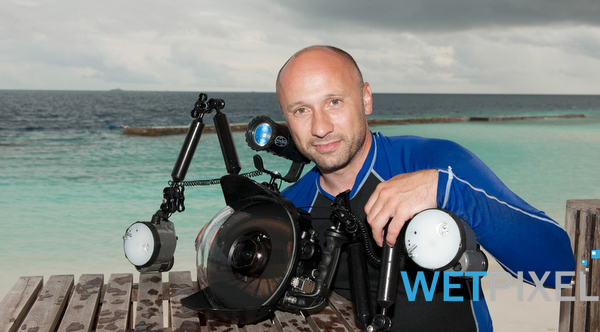
Fundamentals of TTL Underwater Strobes Control
By Pavel Kolpakov
Flash Control Principles and their application to Underwater Strobes
Electronic flash has come a long way since Harold “Doc” Edgerton, an American explorer and inventor, in 1931 brought to life the first electronic flash, which then represented the simplest strobe. However, an electronic flash illuminator’s complex yet straightforward basic operating principle remains the same - we charge a large capacitor and then instantly release the stored energy in a bright flash of light in a fraction of a second. The super-bright glow of the gas occurs in a flash lamp, a glass tube filled with inert gas, xenon. With a gas discharge flash, hundreds of joules of energy are released in a few milliseconds, so flash units are potent light sources. In addition, due to the ultra-short glow time, the flash allows the photographer to “freeze” moving objects, getting a sharp picture, which is very important for high-quality photography. Underwater strobes are similar in principle to land flashes but differ in a sealed housing, connectors, and precise control via fiber optical and electrical cables.
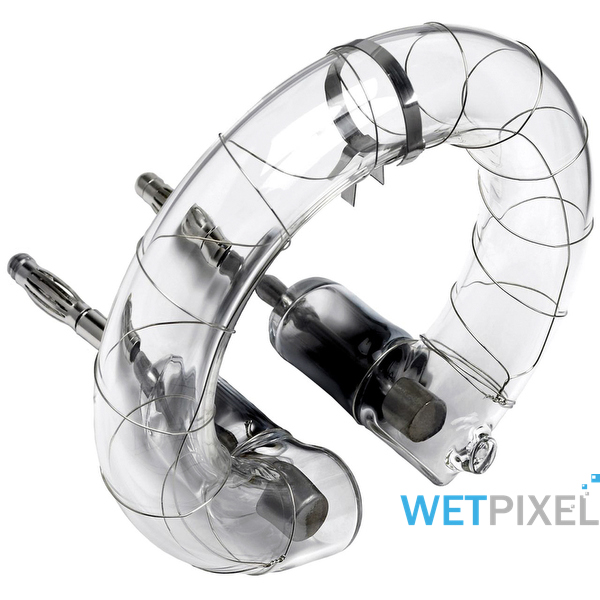
To illustrate the flash operation, below is a real oscillogram of the discharge current passing through a ring flash lamp; I received and saved it in the memory of a digital oscilloscope when I developed TTL profiles to support Subtronic Pro 270 strobes.
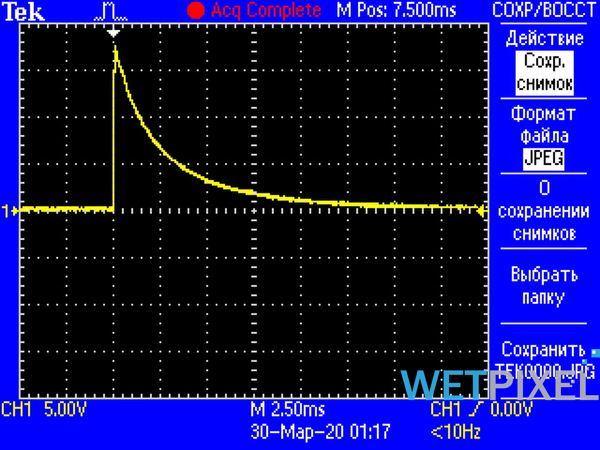
By the way, this picture illustrates the general dynamics of a high-voltage gas discharge and, accordingly, the dynamics of a light pulse. Here, the flash was fired in the manual “Full” mode of the underwater strobe; the oscillogram shows a complete unlimited discharge of energy (270 Joules) stored by the strobe storage capacitor.
A sharp, almost instantaneous rise in the pulse to the maximum can be seen, followed by the principal, most potent phase of the glow for several milliseconds. Then there is a slow decay of the pulse (long tail with low intensity). The pulse carrying the primary energy lasts only about 3-5 milliseconds. This is a very short glow, which allows you to “freeze” the movement of objects and get a sharp image as a result.
Underwater strobes tend to use circular or linear design discharge tubes exclusively.
In a circular tube, gas-burning naturally stops after about 10-20 milliseconds (including a long “tail”); this is a characteristic figure for a large circular tube, for example, in a Sea & Sea YS-250, Subtronic Pro 270, Seacam 60D, Seacam 160D, and similar strobes.
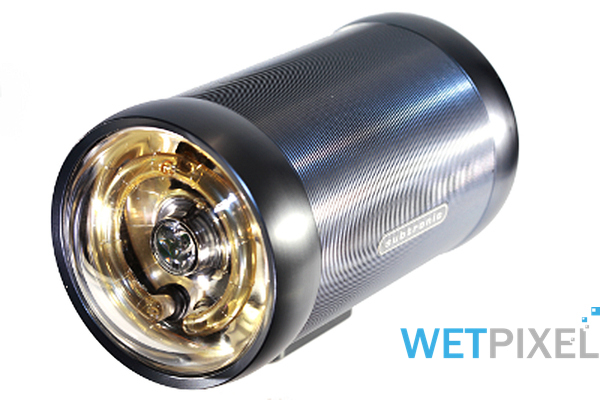
On the contrary, short tubes of linear design have a significantly faster burning time: 3-5 milliseconds, for example, linear lamps in the popular underwater flashes Inon Z330, Sea & Sea YS-D3, and similar. A popular underwater strobe with two linear design lamps in a T-shaped arrangement is the Z330 from the Japanese company INON, which fires in about four milliseconds.
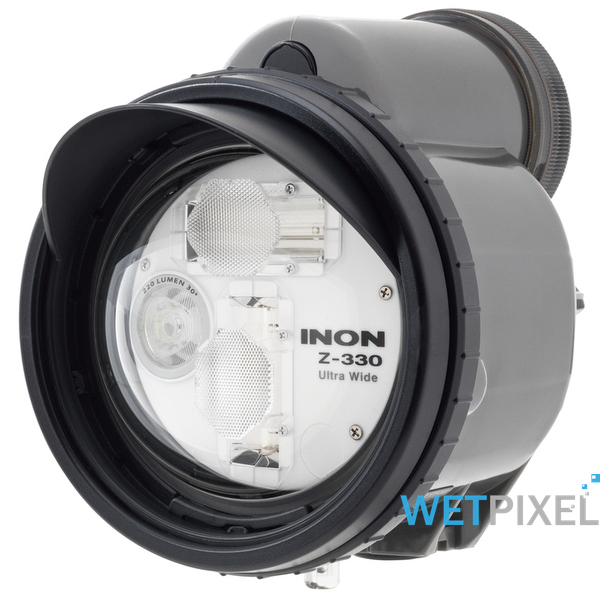
The key to understanding how a flash tube control is to remember that the luminous flux turns on and off almost instantly, in response to the presence or absence of energy supplied to the tube. Therefore, the main form of control over light output is to turn on / off the electrical impulse supplying the tube at the right moment. In film times, this energy was controlled by a component called a “thyristor.” In the digital era, the faster “IGBT” (Insulated Gate Bipolar Transistor) is turned on and off to control the fast preflashes of digital cameras.
How is the illumination intensity of an underwater strobe unit practically controlled?
Generally speaking, we control the duration of the flash glow, the most convenient and radical way to control flash lighting. And this is the primary method of management at present. As I mentioned above, in modern underwater strobes, the power control switch is an IGBT transistor. It turns on and off the glow of a gas-discharge (xenon) lamp, forming a pulse of light of the required duration (shown in red on the oscillogram below).
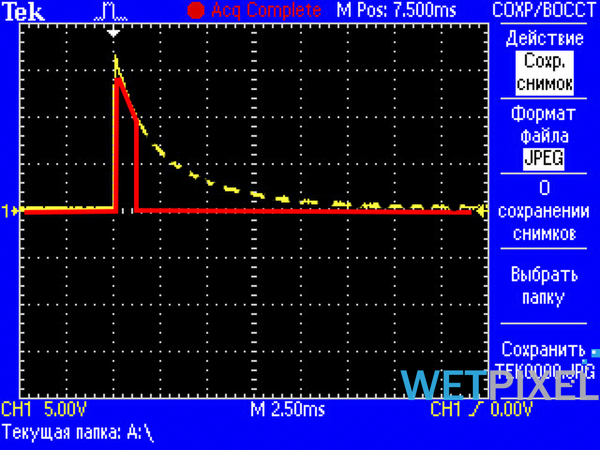
We limit the duration of the flash pulse manually with a dial switch on the strobe body (in manual mode “M”) or automatically (in “TTL” mode) using the TTL control system installed in the underwater housing.
As a sample, the photo below shows the UW Technics optoelectronic TTL system, installed in a Seafrogs aluminum version housing for Sony A7RII camera. It automatically controls underwater strobes, providing the correct lighting for every shot via fiber optical cables and electric cables. The photographer changes the Aperture, Shutter Speed, ISO, and other camera settings within broad limits to shoot various scenes. The TTL automation system evaluates all this through the camera lens and always provides the correct lighting in the frame. In most cases, the underwater photographer can relax and rely on the state of the art TTL controls. However, a manual control mode is also available there.
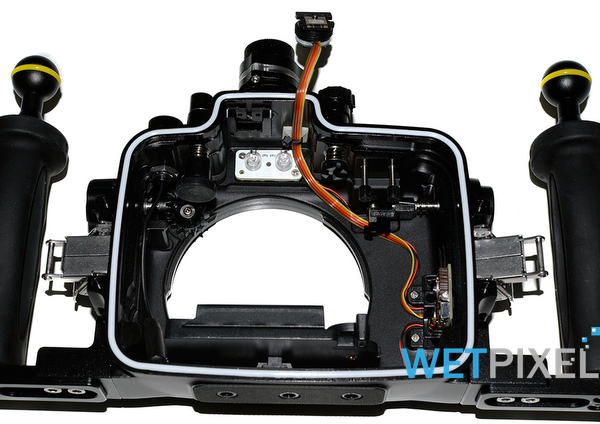
About the Author
Pavel Kolpaklov is an acknowledged expert in the design and manufacture of underwater lighting control systems. His company, Underwater Technics decodes TTL protocols, and then designs and builds specific circuit boards that allow underwater photographers to trigger a wide variety of strobe in both manual and TTL modes.
- Underwater Flash Exposure Fundamentals
- TTL Development History
- Digital TTL Primer
- High Speed Synchronization